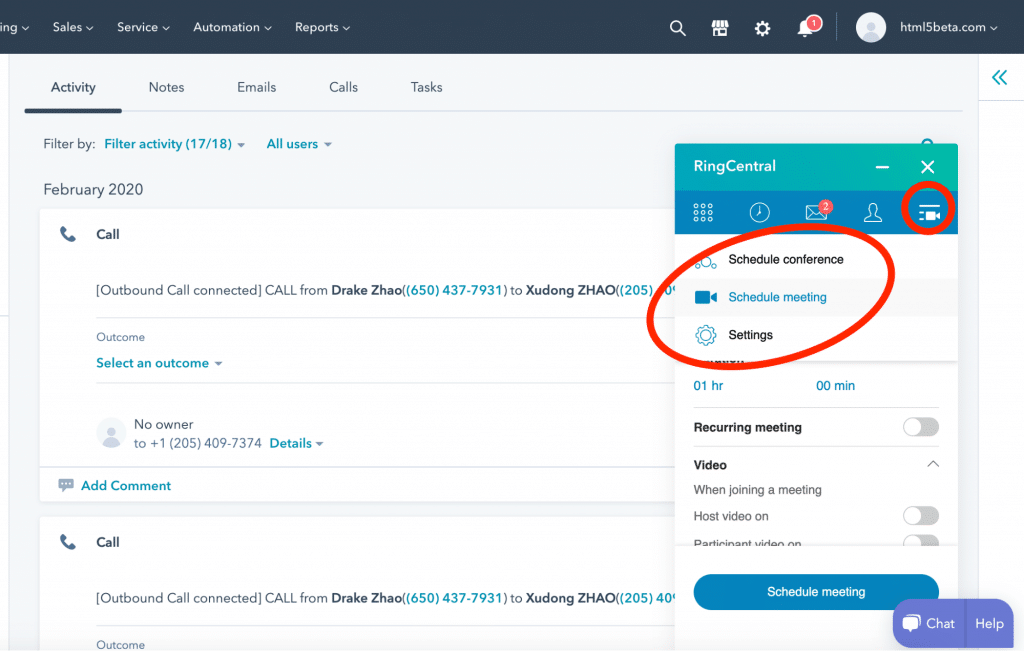When you’re running a small business, you’re keenly aware of how every single customer impacts your ability to keep running strong. So when someone spends their time and resources to support your company, it means a lot—and you should tell them.
Customer thank-yous can provide tangible business benefits, like repeat business or increased referrals, but more importantly, they’ll serve your overall business and build your connection with customers.
The important thing is to craft a thank-you and send it in a way that is appropriate and on-brand for your small business. A thank-you note in your brand voice can reinforce the things a customer liked about your business to start with, whether it’s your casual style or high-end style, while building the kind of connection that leads to a long-term relationship.
Keep reading to learn:
- Why it’s important to thank clients for their business
- 3 key elements of a good thank-you
- How to thank a client on different channels
- How to say thank you for the 3 most common scenarios
How client-obsessed is your business? Take the quiz. 💚
Why it’s important to thank clients for their business
You may remember your parents making you send thank-you notes for Christmas and birthday gifts you received as a child. Business thank-yous are similarly polite but can also provide real benefits to your small business.
The major benefit of sending a client thank-you is the potential for repeat business. By endearing your customers to your brand, you increase the likelihood that they’ll spend with you again. Acquiring a new customer is between 5% and 25% more expensive than retaining an existing one, and an increase in customer retention of 5% can increase profit up to 95%.1
Happy customers are also more likely to send referrals your way—saving you marketing time and money by essentially selling your services for you.
Finally, you can use thank-you notes to reconnect with older clients or customers you haven’t spoken to in a while and remind them about your business. Find an occasion to reconnect, like their anniversary of working with you, the end of the quarter, or the holiday season. For high-value customers or referral partners, you may even send a small gift at the end of the year.
If you want to build thank-yous into your customer experience, try to keep some element of personalization in them, especially while your business is small. Yes, you and your team are probably really busy, but this is one of those few gestures that are much more meaningful and impactful if you put in an extra minute or two to do it right .
Even if you just spend a few extra seconds to edit your form thank-you to be more specific and personalized for each customer, it makes a big difference (and there are tools that help you with that step too).
[ebook-download title=”How customer-obsessed is your business?” link=”https://netstorage.ringcentral.com/documents/quiz_how_customer_obsessed_your_business.pdf” cta-text=”Take the quiz” src=””]
3 key elements of a good thank-you
You probably already know how to say thank you to a friend or family member, but when it comes to business, there are a couple of key elements that you’ll want to be sure to include.
Whether you send an email, text, or handwritten note, here are the steps to writing the perfect professional thank-you every time.
1. Say thank you
…of course! This one is simple but can easily be overthought or overworked. Don’t bury the lead amongst flowery language of customer appreciation or your valued customers. Just get to the point and let your customer know the point of this conversation—to say thanks.
Be sure to be clear about what you’re thanking them for: be it a purchase, a referral, or something else that supported your business.
And to do that, there’s no need to say much more than thank you.
For example:
Don’t forget, you’ll want to repeat that thank you at the end of your note as well, to reinforce the message.
2. Personalize it
Your thank-you just doesn’t sound sincere if there’s nothing specific about it. If you really want to exceed customer expectations, make it clear that this isn’t a bulk email blast by including something personal or specific to your customer.
If you have a high-touch sales cycle, you could mention a specific fact you remember about your customer or a milestone that your product or service has helped them achieve.
If the nature of your business means that you don’t have quite that much information about your customers, you can always personalize your message by making note of the item they purchased or the date they came in.
For example:
3. Deepen your relationship
Finally, you have the opportunity to do something or request something that will strengthen your relationship with your customer.
Just be sure whatever it is serves both you and your customer—nothing puts a damper on feel-good gratitude like asking for a repeat purchase or upgrade. There’s time for that later anyway.
There are a few options that are more appropriate in a thank-you note, though:
- Ask for customer feedback, which could help you keep them as a customer for the long term.
- Tell them about your rewards program to be sure they’re getting the most out of each visit.
- Remind them to reach out if they have any questions, reinforcing that you’re a resource for them.
For example:
How to thank a client on different channels
We’ve gone over the specifics of how to write a thank-you, but what about the logistics of how to actually send a client thank-you?
The communication channel you choose should be consistent with your brand and the ways in which customers are used to hearing from you.
Saying thank-you doesn’t have to feel formal and buttoned-up if it’s not on brand for you—formality does not equal sincerity. Instead, choose a medium that feels natural for customer communications, whether it’s a phone call or a text.
How to say thank you on the phone
If you’ve primarily spoken to a customer on the phone during the sales process, a thank-you call will be the most natural option. Plus, depending on the timing, it can be a good opportunity to casually check-in after they’ve been using your product a while or before it’s time to renew.
A phone call can follow the same basic structure we covered above, although it’ll of course be more open-ended since it’s a two-way conversation.
Just avoid writing out a script ahead of time—it will just make your thank-you call sound forced, rehearsed, and unnatural. Remember, the key to a good business thank-you is sincerity, and speaking off-the-cuff is the best way to sound sincere on the phone.
One trick for more detailed and genuine thank-yous? Use technology. For example, if your phone system integrates with your CRM, you should be able to pull up your customer’s file before your call so you can see their past purchases and conversations with you.
If you use HubSpot, it hooks up to RingCentral to not only show you information about your customer (or prospect), but also let you call that person right from your screen using the RingCentral dialer. Way easier than dialing each client and looking up their information manually:
This is also a great way to build long-term relationships with your clients. If you and your clients have talked about their goals in using your product or service, that information can be logged in this platform, and you can follow up with them periodically to see if they achieved those goals.
Can you thank a customer via text?
SMS thank-yous might not be the first thing you think of when considering customer appreciation. That said, by reaching out in the same medium where your customers make plans with friends or ask their partner to defrost the chicken for dinner, you can cement their personal connection to your brand.
It also might fit better within your brand if you’re going for a young, hip vibe.
The key to a thank-you over text is to edit it so it feels appropriate for the medium. If you send an email-length message via text, you’re just going to look out of touch, and chances are, the customer won’t even read it.
A thank-you via text can be short and sweet. Keep it focused on saying thanks and include one specific detail. No need to wax poetic—just say thanks and hit send.
For example:
Using RingCentral, it’s easy to incorporate SMS messaging into your business communications tools and strategy. You can even send texts from the same business phone number that you use for calling without exposing your personal cell number.
In fact, 24 Hour Tees (a T-shirt printing company with, you guessed it, a 24-hour turnaround time) has mastered the art of customer interactions through text—here’s a quick look at how they did it:
Thank-you emails
As we already mentioned, email is a common medium for post-purchase thank-you notes. While that means your customer will be comfortable receiving a thank-you in their inbox, it also means your note is the most likely to be ignored here.
That’s why personalization is especially important in an email thank-you note:
- Start with the subject line—emails with personalized subject lines have a 50% higher open rate than those without.3
- Send a thank-you email without your usual formatting. If it looks like a newsletter, it’s likely to be ignored.
- Finally, focus on the details even more than you would in another medium. We’re all used to automated emails, so you have to work extra hard to make it clear that this isn’t a form letter.
- Bonus: Sneak a customer survey in there!
For example:
Subject: Thank you, [Name]
Hey there [Name],
I just wanted to reach out on behalf of the [dog grooming business] team to say thank you for bringing [pet name] in to see us the other day! She’s such a sweetheart, and we hope she’s a lot more comfortable in the summer heat with her new shorter ’do. Let us know if you have any more questions about that shampoo we used—it smells so good, doesn’t it?
Thanks again, [Name]. We hope to see [pet name] again soon!
Cheers,
[Name] and the [business name] team.
Saying thank you with a handwritten note
A handwritten note is a bit much for some scenarios, but if your customers make a big investment when deciding to purchase from you, it can be a nice touch.
There’s a simple formula when it comes to writing any thank-you note by hand: start and end by saying thanks, and fill in the middle with a sentence or two about why you’re grateful.
When modifying your thank-you for business purposes, that middle sentence should focus more on your customer than you, but the same formula works great.
For example:
Dear [Name],
I just wanted to say thank you for your business at [high-end children’s boutique]. It’s been such a treat to watch your granddaughter grow up before our eyes and to have the pleasure of helping you pick so many toys and gifts for her over the years. We’re so glad to have you as a part of the [business name] family.
Thanks again,
[Your name]
Don’t have a lot of time on your hands? There are companies, like Inkpact, that’ll hand write the notes for you—you just type them up and send them in.
How to say thank you for the 3 most common scenarios
How can you create a plan for the best touchpoints to be thanking your customers? Think through the actions they take that you’re thankful for.
These may vary slightly depending on your business, but for most companies, there are three times when you’ll want to be sure to send a thank-you to your customers: after a purchase, after a repeat purchase, and after receiving a referral.
Post-purchase thank-you
We’re all used to receiving an automated thank-you email that’s really more of an order confirmation when we order something online. There’s nothing wrong with that automated customer service, but, as a small business owner, you have an advantage—you can have a more personalized relationship with your customers.
How you customize this thank-you will again depend on your sales process. If you have a high-end boutique, you might task your sales staff with writing handwritten thank-you notes to customers at the end of their shift.
Have a high-touch sales process for a B2B business? A sincere email that includes details about that particular customer might be a nice way to say thank-you.
If you run a restaurant, you might send a thank-you text to customers in your loyalty program after they come in—signed from the waiter or waitress who served them.
Post-purchase thank-yous also tend to vary based on the dollar amount. For purchases that are more frequent or at a lower price point, just a quick text to say thanks is good enough.
(Larger or long-term deals warrant a more in-depth note of gratitude.)
Repeat customer thank-you
As a small business owner, there’s almost nothing more flattering than a repeat customer. Plus, as we already mentioned, satisfied, loyal customers can be the lifeblood of your business. Repeat customers are more likely to convert, spend more on average, and are more likely to share about your business.2
When thanking a repeat customer, you can invite them in a little more. This is the time to really express your gratitude and almost make them feel like they’re a part of your team.
Begin by thanking them and letting them know how important their loyalty is to your small business. Let them know about any upcoming sales or special deals they should know about, or invite them to your loyalty program.
Let them in a little. Tell them about your company’s recent exciting growth, business goals, or a new product. Make them feel like they’re getting the inside scoop (though obviously you don’t have to give away too much).
For example:
Referral thank-you
When someone gives you a referral, it’s the ultimate compliment—they’re putting their reputation with a friend, client, or family member on the line by saying that your brand is great.
And yet, so often, the person who is kind enough to share your name hears nothing. That’s not going to make them feel very good or get you more referrals from them.
Instead, let them know that they’re appreciated and encourage repeat referrals by sending a thank-you. Again, specificity is key, even if you can’t share the exact details of the deal you may or may not secure through their referral.
Something like “Thank you so much for sending [NAME] my way—your referral is my greatest compliment!” is specific without breaching their friend’s privacy.
Depending on your business, you might send a thank-you gift in addition to a note when someone sends you a referral. Something small—like a gift card to a local coffee shop or a small scented candle—is an appropriate gesture when someone has gone out of their way to help you grow your business.
Starting thanking your clients for their business today!
A professional thank-you is one of those steps in the customer journey that is easily overlooked but, done right, can make a real difference for your business.
The right expression of gratitude—for purchases, repeat purchases, or referrals—delivered through the right medium can go a long way toward cementing the relationship your customers have with your brand.
With customer retention being such an important metric for small businesses, saying thank you for being a client is not only a nice thing to do—it can help you hit your business goals, too.
1 hbr.org/2014/10/the-value-of-keeping-the-right-customers
2 blog.smile.io/repeat-customers-profitable
3 marketingdive.com/news/study-personalized-email-subject-lines-increase-open-rates-by-50/504714
Originally published Apr 02, 2020, updated Feb 26, 2021






